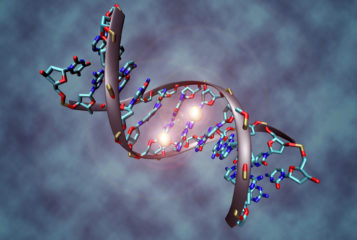Results from the largest ever study of its kind into autism strongly suggests that rare genetic variants contribute far more than common variants to the risk of developing the condition.
The three-year study, led by Dr Stephen Scherer of the University of Toronto and Toronto's Hospital for Sick Children, concludes the second phase of the Autism Genome Project, an international consortium founded in 2002 to facilitate the identification of autism susceptibility genes.
Using microarrays, the researchers studied DNA from 996 primary school children of European ancestry, all of whom had been diagnosed with autism spectrum disorder. The researchers also studied DNA from 1,287 matched individuals with no such diagnosis, who served as the study's control group. The research focused on CNVs (copy number variations ), which are variations in segments of DNA represented either by the presence of extra copies (duplications) or the absence of expected copies (deletions). CNVs are difficult to study, and can demand higher standards of data than other forms of genetic research.
The study discovered a subtle but distinct difference between the CNVs in the experimental group and in the control group. Although there was no significant difference in the number of CNVs per individual in each group, or in the length of CNVs in individuals in each group, there was a significant difference in the location of the CNVs. CNVs were 19 per cent more likely to be located within or near genes in the experimental group than in the control group. This suggests that more genes are disrupted by CNVs in individuals with autism than is the case in individuals without autism.
In many instances, it was established that the disruptive CNVs in the experimental group were inherited from the affected individuals' parents. In some instances, however, the CNVs had arisen spontaneously (de novo). This could have occurred either in the gametes contributed by one of the affected individuals' parents, or in the resulting embryo.
Of the CNVs discovered, some disrupted genes that were already thought to play a role either in the development of autism, or in intellectual development more broadly. But some of the genes disrupted by CNVs in the experimental group had not previously been associated with autism, and were therefore new candidates. At first glance, these new candidate genes appeared to differ vastly between individuals in the experimental group. But patterns emerged when these genes were grouped by function, suggesting a commonality between the biological pathways whose interruption results in autism, even if the mechanism causing the interruption differs.
The study has prompted much speculation about the possibility of developing new diagnostic tests and medical treatments for autism. One of the researchers involved, Professor Tony Monaco of Oxford University, said: 'We do hope to start working with pharmaceutical companies. One hope is that drugs that they might have already developed for other purposes could be used because they have a role in autism'. But while ideas for new drug treatment targets may emerge from the study, the enormous diversity of genes affected in different individuals in the experimental group militates against the development of any universal genetic test.
The charity that publishes BioNews, the Progress Educational Trust, is currently running a project entitled Spectrum of Opinion: Genes Autism and Psychological Spectrum Disorders supported by the Wellcome Trust. A School Resource Pack developed as part of the project will be piloted at Robert Napier School in Gillingham later this month.




Leave a Reply
You must be logged in to post a comment.